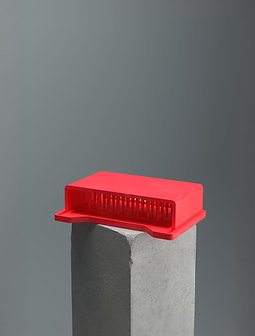17 hours ago2 min read
3 days ago4 min read
5 days ago5 min read

Updated: May 5

Wound healing is a fascinating biological process that involves an intricate dance between different cell types and molecular signals. This highly coordinated sequence ensures the body can repair damaged tissue, restore function, and prevent infections. But despite the body's natural ability to heal, wound healing is anything but simple. Understanding the key players in this process is crucial for developing better treatments, interventions, and research tools.
Let’s break down the major stages of wound healing and the cellular heroes that make it happen.
As soon as an injury occurs, the body kicks into high gear to stop the bleeding. This phase starts with vasoconstriction (blood vessel tightening) to reduce blood loss. Platelets—the first responders—rush to the site, clumping together to form a temporary plug. They also release growth factors like platelet-derived growth factor (PDGF) to summon reinforcements. A fibrin clot forms, sealing the wound and creating a scaffold for the next phase of healing.
Key Players: Platelets, clotting factors, fibrin
Once the bleeding is under control, the immune system steps in to prevent infection and clear out debris. Neutrophils, the body’s rapid-response white blood cells, arrive first, gobbling up bacteria and dead cells. A few days later, macrophages take over, clearing out remaining debris and secreting cytokines and growth factors that shift the wound into the next healing phase.
What Happens Here?
Neutrophils eliminate bacteria
Macrophages clean up dead cells and produce growth factors
Mild swelling, redness, and warmth occur as the body fights off infection
Key Players: Neutrophils, macrophages, cytokines, growth factors
This is where the real rebuilding happens! Fibroblasts flood the area, producing collagen and extracellular matrix (ECM) to lay the foundation for new tissue. Meanwhile, endothelial cells trigger angiogenesis, the formation of new blood vessels to supply oxygen and nutrients.
At the same time, keratinocytes begin migrating across the wound bed in a process called re-epithelialization, sealing the wound with new skin cells. This phase is all about tissue growth, wound contraction, and restoring structural integrity.
Key Players: Fibroblasts, endothelial cells, keratinocytes, collagen
Even after a wound appears to be closed, the healing process isn’t over. The body works behind the scenes for weeks to months—sometimes even years—remodeling the newly formed tissue. Collagen is reorganized into a stronger structure, unnecessary cells are removed, and blood vessels stabilize.
However, the repaired tissue never regains full strength, which is why scar tissue is more fragile than normal skin. In chronic wounds or burns, this phase may be disrupted, leading to complications.
Key Players: Collagen, fibroblasts, matrix metalloproteinases (MMPs)

While scientists understand the general stages of wound healing, studying it in a lab is no easy feat. The process varies greatly between individuals and is influenced by factors like age, genetics, and underlying health conditions (e.g., diabetes slows healing).
Researchers rely on in vitro (cell culture) and in vivo (animal models) to simulate wound healing, but these models have limitations. Cell migration, re-epithelialization, and tissue remodeling are difficult to measure accurately without specialized tools.
At CLYTE, we understand the complexity of wound healing and have developed cutting-edge tools to aid researchers in studying this process:
CellCut – A powerful tool designed for cell migration assays, helping researchers create consistent and standard scratches, crucial for understanding wound closure and re-epithelialization. CellCut 3.0 is currently available for testing!
Pyra – Tailored for burn wound healing assays, Pyra enables scientists to simulate burn injuries and test treatments in controlled & uniform conditions, accelerating discoveries in regenerative medicine.
By using advanced tools like CellCut and Pyra, researchers can gain deeper insights into wound healing dynamics, leading to breakthroughs in treatments, faster healing times, and improved patient outcomes.
Wound healing is an intricate and beautifully orchestrated process. By understanding its phases and challenges, we can develop better ways to aid recovery and enhance the body’s natural healing ability. At CLYTE, we are committed to supporting researchers in this mission with innovative solutions that make studying wound healing easier and more precise.

